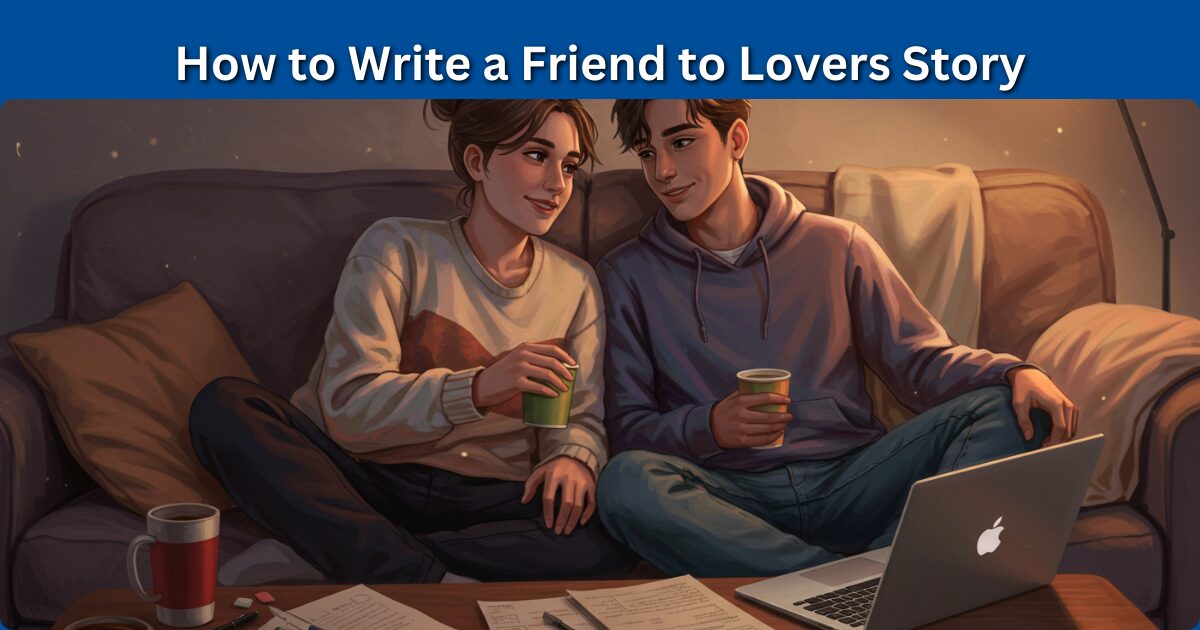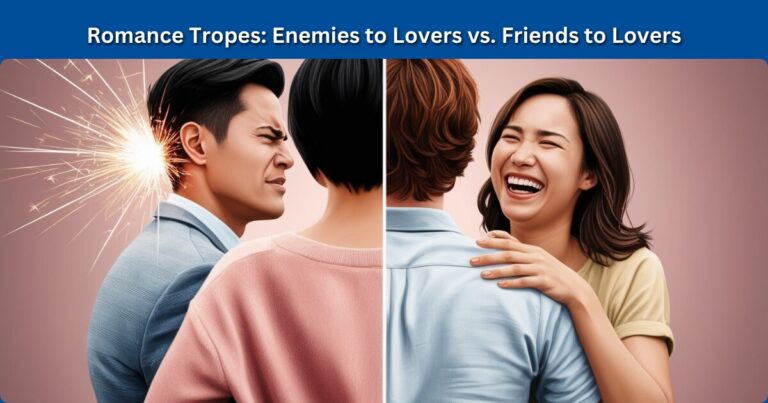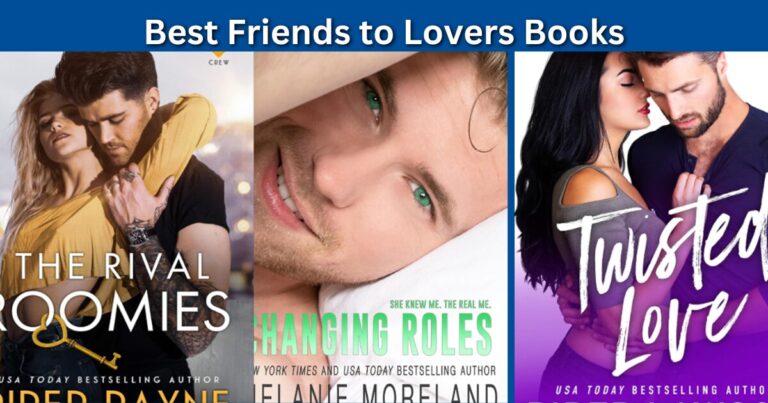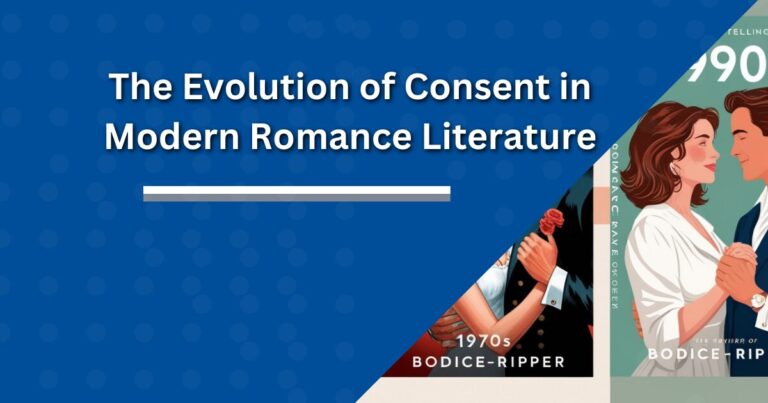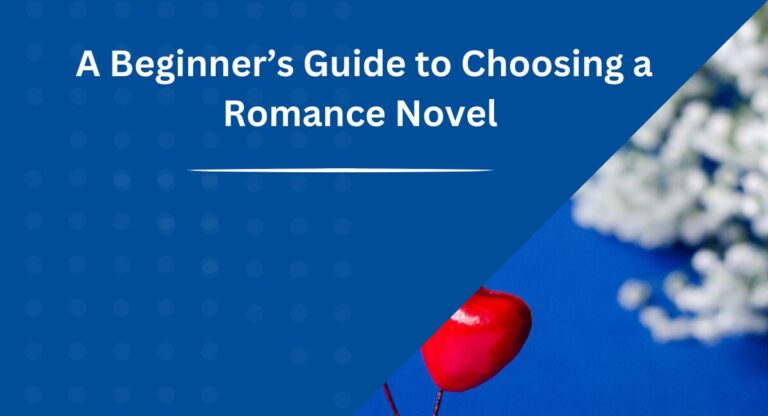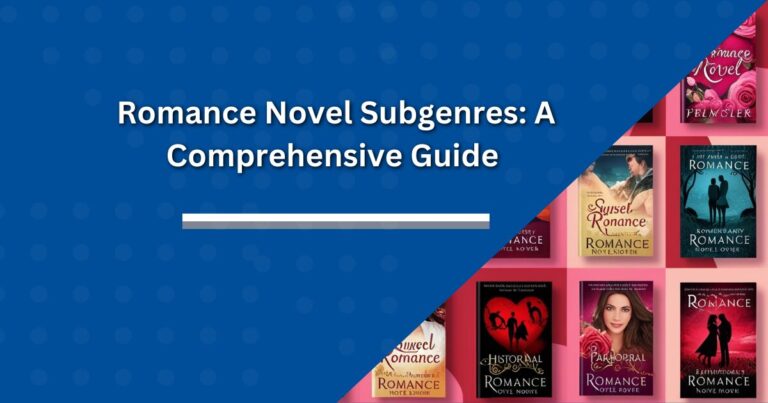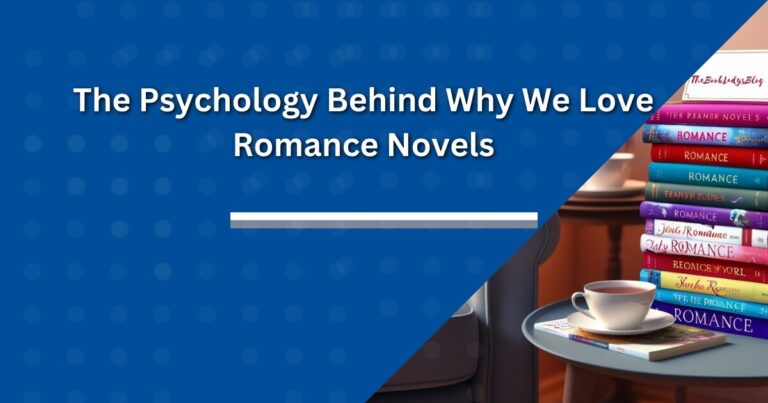How to Write a Friend to Lovers Story: Expert Writing Guide
Writing a friends-to-lovers story is like cooking a favorite family recipe—there’s love, familiarity, and just the right amount of spice.
This particular romance trope strikes a chord with readers because it’s so relatable.
Who hasn’t wondered, “What if my best friend is actually the one for me?”
If you’ve ever made that leap in real life or dreamed about writing it, this guide is for you.
We’ll dive into everything from crafting authentic relationships to pacing the romance just right, so by the end, you’ll know exactly “how to write a great friends-to-lovers story.”
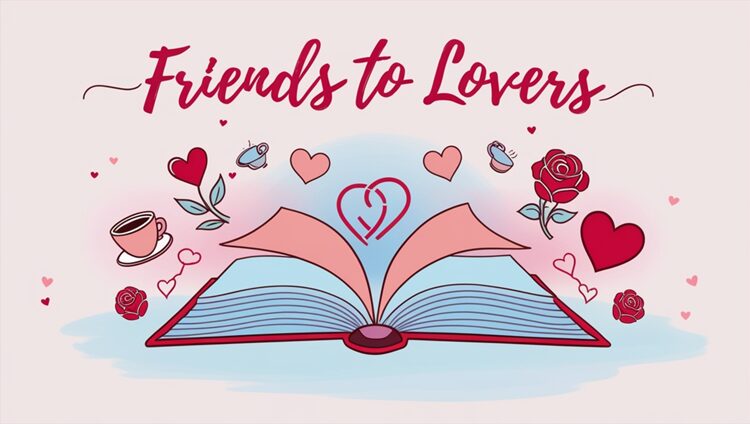
Key TakeAway
- Emotional Depth Matters: Show characters’ shared history, trust, and gradual chemistry. Avoid rushing the romance for authenticity.
- Build a Strong Friendship Foundation: Highlight routines, inside jokes, and relatable moments for believability.
- Pace the Romance Naturally: Use subtle shifts like lingering glances or accidental touches to evolve the relationship.
- Conflict Keeps it Real: Use inner fears (ruining the friendship) or external obstacles (career moves, exes) to heighten emotional stakes.
- Combine with Other Tropes: Blend friends-to-lovers with fake dating, second chances, or roommates to add tension and complexity.
- Avoid Pitfalls: Rushed development, forced conflict, and unrealistic dialogue can weaken the story. Stay true to the characters' bond.
What is Friends to Lovers?
Let’s break down what makes this trope so timeless and endearing.
Friends to lovers is all about taking a platonic relationship and slowly evolving it into something romantic. At its core, it thrives on intimacy built over time, which often leads to a more believable love story.
Whether it’s childhood friends reconnecting later in life or a workplace friendship turned romantic, this trope has a way of wrapping readers in a warm hug of “meant-to-be.”
Think about famous examples.
Can you imagine When Harry Met Sally without their years of will-they-or-won’t-they banter?
Or, for a literary twist, how about Jane Austen’s Emma?
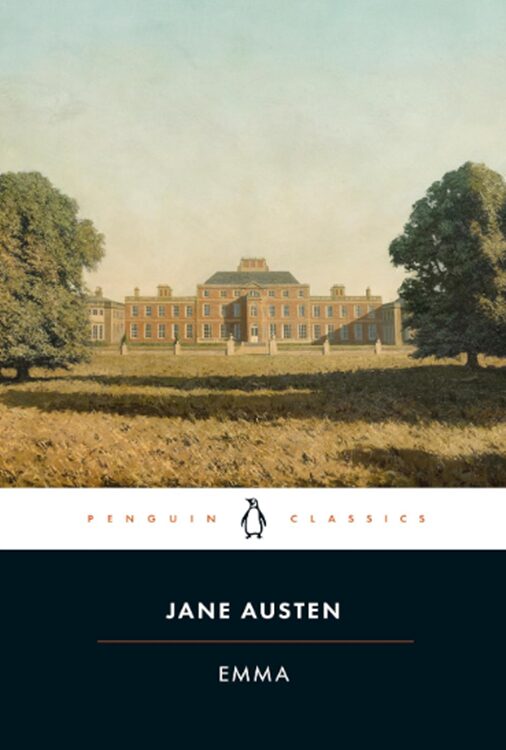
Watching these characters realize they love someone who has always been there is a deeply satisfying journey.
Readers love this trope because it feels inevitable yet magical. It’s grounded in reality, but there’s room for butterflies, hesitation, and everything in between.
Plus, stories like these often come with built-in emotional stakes, as the characters are already invested in each other’s lives.
Want to dig even deeper?
Check out our post on Enemies to Lovers vs Friends to Lovers to see how the two tropes compare and what nuances each brings to storytelling.
Essential Elements of Friends to Lovers Stories
Crafting a great friends-to-lovers romance requires key ingredients. You can’t just throw two characters together and hope their years of friendship make up for a lack of tension or chemistry.
Types of Friend-to-Lover Relationships
One of the most fun parts of this trope is choosing the type of friendship your characters share.
Are they childhood friends who grew up next door to each other?
Maybe they’re roommates with an unspoken electricity or work colleagues noticing subtle changes over time.
Each scenario brings unique dynamics and challenges, so pick one that excites you.
If you’re drawn to the idea of shared spaces, check out our post on Roommates to Lovers Romance Books for even more inspiration.
Key Story Components
A solid friends-to-lovers story needs a strong foundation—and it’s all about tapping into the depth of their shared history.
Show readers the weight of their relationship by including flashbacks, inside jokes, or subtle callbacks to formative moments. Build on their trust, emotional vulnerability, and mutual respect.
Another must-have?
Chemistry.
Often, these characters already “click”, so it’s essential to show how their connection deepens. Include small, charged moments, like lingering glances during a casual hangout or an accidental touch that suddenly feels different.
For tips on nailing that perfect tension between familiarity and romantic attraction, explore our post on Achieving Romantic Tension in a Novel.
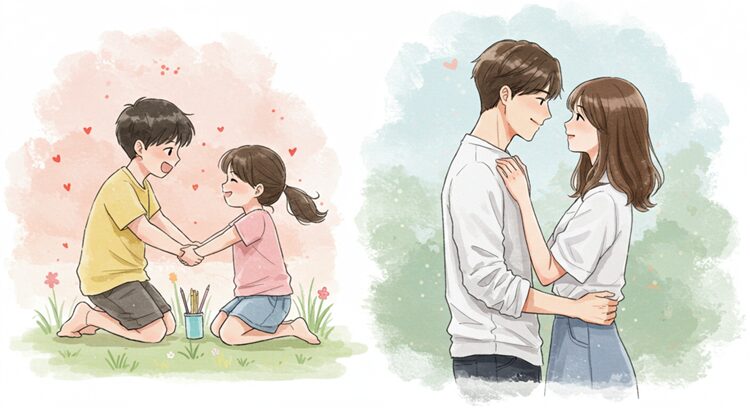
Crafting Your Friends to Lovers Story
This is where I get to share some lessons I’ve learned the hard way.
Early in my writing, I tended to rush the transition from friends to lovers. I’d skip vital steps—like laying a friendship foundation—because I was eager to move to the romantic fireworks.
Big mistake.
Let’s avoid that, yeah?
Building the Friendship Foundation
Start by giving your characters plenty of shared experiences. Show them at their most natural: maybe watching a cheesy rom-com together or teaming up for a work project.
These moments shouldn’t scream “romance,” but they should ooze connection.
One trick I like to use is planting “friendship anchors”—small, repeated actions or habits that give the friendship depth.
For example, maybe your characters have a tradition of grabbing coffee after a morning jog, or they always text each other silly animal videos before bed. Details like these do wonders for believability.
Not sure where to begin?
Use our handy character development guide to map out your characters’ shared history!
Developing Character Chemistry
Chemistry can’t be forced; it needs time to build.
Include little interactions that show how your characters’ affection subtly shifts. Maybe one character starts noticing how the other’s laugh lights up a room, or proximity sparks nervous energy.
Explore how shared hobbies or even moral values strengthen their connection.
For instance, they could bond over their passion for cooking, their love of books, or a shared commitment to volunteering.
If your friendship vibe includes humor, lean into it—shared laughter can be a powerful precursor to love.
Creating Compelling Conflict
Conflict is a non-negotiable in any romance story, and friends-to-lovers relationships have built-in drama potential.
Think about it: these two characters are terrified of ruining years of friendship if things go south.
Dive into their internal struggles.
Maybe one character starts falling but they suppress their feelings out of fear.
External obstacles can also spice things up.
Introduce an ex-partner reappearing or a professional obligation that threatens their dynamic.
If you’re looking for more inspiration, revisit classic stories featuring Second Chance Romance Books, which often overlap with this trope.
The Romance Evolution
This is my favorite part—when friendship starts transforming into something new.
To maintain authenticity, let this shift happen gradually.
Start with subtle changes: extra-long hugs, a stray hand brushing over a shoulder, or a slightly different kind of eye contact.
Plan at least one sparkling turning point. Think about the classic “Oh” moment, when it clicks for one character that they’re madly, irreversibly in love.
One of my all-time favorite examples is in Friends, when Ross and Rachel share their first kiss—so much tension and payoff at once.
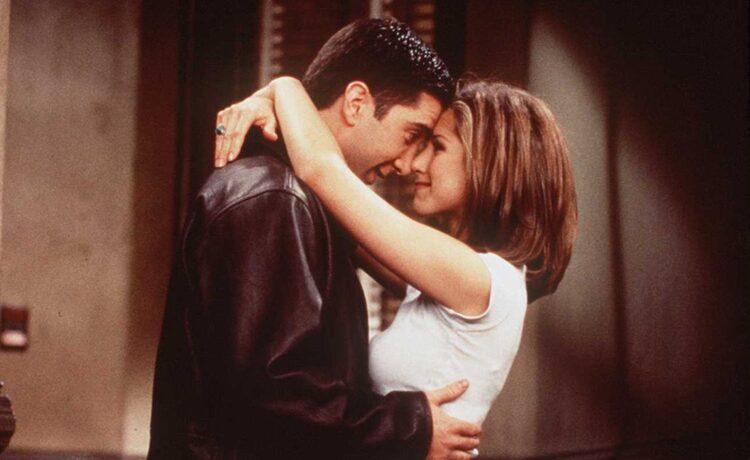
When done right, these moments stay with your readers long after the story ends.
Common Pitfalls to Avoid
Even the most seasoned writers can hit bumps, so let’s avoid the three big ones:
- Rushed Development: Friendship-to-love stories thrive on slow-building tension. Resist the urge to speed things along.
- Forced Conflict: Readers can sense when a disagreement or obstacle feels manufactured just to push the plot forward.
- Unrealistic Dialogue: Characters should talk like real friends. Avoid over-the-top monologues or unnatural confessions.
For help sidestepping these and getting the dialogue just right, skim through our tutorial on writing realistic dialogue in romance.
Tips for Success
Here are some quick tips to keep in your toolbox when writing a friends-to-lovers story:
- Try detailing your story beats in a scene planning worksheet.
- Use writing prompts to brainstorm emotional turning points.
- Keep the core friendship intact even as romance takes center stage.
Also, don’t underestimate the emotional satisfaction of pairing this trope with others, like the Fake Dating Trope, for added layers of complexity.
Conclusion
Writing a friends-to-lovers story requires heart, patience, and attention to detail—but the result is so worth it.
Start by nailing the foundation of your characters’ friendship, sprinkle in slow-burn chemistry, and don’t shy away from emotional stakes.
So, grab a notebook and start writing your next masterpiece. The literary world could always use more heartwarming tales of love blooming from friendship.
Let’s make it happen!
FAQs
What makes a friends-to-lovers story stand out?
A: Focus on emotional depth and authenticity. Highlight shared history, gradual chemistry, and meaningful moments.
Avoid clichés by showing distinct, personal reasons why the characters belong together.
How do I avoid rushing the romance?
A: Build the friendship first!
Use small, subtle shifts—like prolonged eye contact or an accidental touch.
Let the romance grow naturally through meaningful interactions instead of forcing big moments too early.
Should there always be conflict in a friends-to-lovers story?
A: Yes, but keep it realistic!
Inner conflict (fear of losing the friendship) works well.
External conflicts like career moves or the return of an ex can also heighten the stakes without feeling forced.
How can I make their friendship believable?
A: Show shared traditions, inside jokes, and mutual trust.
Use small, relatable actions—like grabbing coffee every week or texting memes—to ground their friendship in everyday life.
Can I combine friends-to-lovers with another trope?
A: Absolutely!
Friends-to-lovers pairs well with fake dating, second chances, or roommates tropes. These combinations add extra layers of tension while still keeping the core friendship central.
